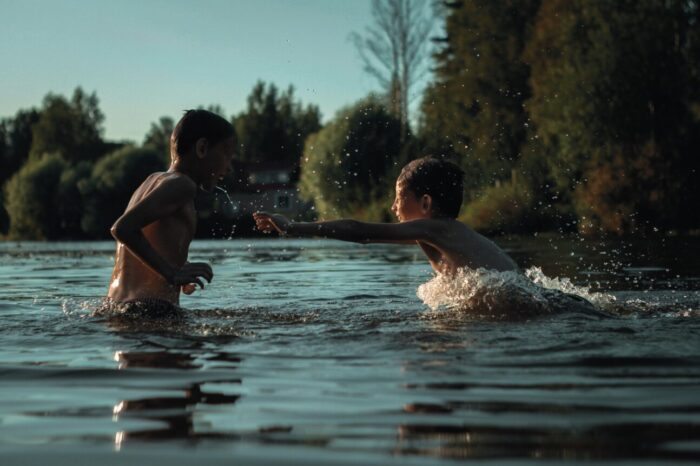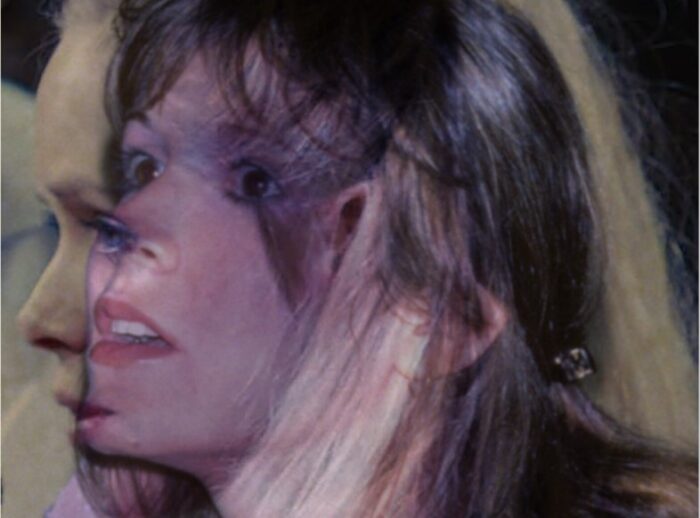
In turn, we use cookies to measure and obtain statistical data about the navigation of the users. You can configure and accept the use of the cookies, and modify your consent options, at any time.

Nothing identifies you like your face. It is in your passport and in your driver’s license, and it is what people recognise you by on the street or on TV if you ever have the fortune (or misfortune) to be featured there. Your face may not be who you are, but it is certainly your own. Even so-called identical twins aren’t exactly alike (as I can testify, being one myself). Except today, some people no longer exclusively own their own their faces. And in the future, that may be true for many of us – even all of us.
In recent years, we have seen the rapid improvement of tools used to create deepfakes, in which a person in an image or video is replaced by another. The technique has also been embraced by Hollywood, with the Star Wars movie Rogue One (2016) perhaps being the best example. It featured the character Grand Moff Tarkin as he looked in the very first Star Wars movie forty years prior. Then, he was played by British actor Peter Cushing. In Rogue One, he was played by Guy Henry but with Cushing’s characteristic face superimposed on his own. The illusion was convincing, or it would have been if Guy Henry had talked and walked like Cushing. Maybe that can be arranged next time.
Rogue One also featured a young Princess Leia, played by Ingvild Deila, carrying Carrie Fisher’s young face. I wonder what Fisher, who was still alive back then, thought about that. More recently, Mark Hamill reprised his role as Luke Skywalker in the TV series The Mandalorian, but with his own younger face rather than the one he sports now. He may have daydreamed that such a thing were possible in real life. Maybe that, too, can be arranged someday.

These are not the only examples of famous people having their faces used (or abused) in deepfakes. Yet now, even ordinary people are being used in commercial deepfakes – with their own blessing.
The startup Hour One uses real people’s likenesses superimposed on AI-generated characters in marketing and educational videos. They have a database of more than a hundred such faces, filmed in high resolution in front of green screens as the faces’ original owners talked and changed facial expressions, hence copying not only looks but also manners (something that Rogue One failed to do). Hour One is looking to expand their database and says that they have a line of people ‘dying’ to be part of it. Not literally, one would hope.
Through Hour One, companies can purchase virtual characters with real people’s faces and make them say (and sell) anything they want, within limits. The company guarantees that the faces of ‘talents’ will not be used for ‘illegal, unethical, divisive, religious, political or sexual’ content, though with no clarification of what this constitutes. What, for example, does ‘unethical’ mean in this context? How little clothes can you wear and how intimate can you be before it becomes ‘pornography’? It also isn’t exactly clear how facial talents are remunerated, although their likeness can be for every use. Moreover, the talents have no say in this use as long as it falls within the company’s ethical guidelines. This could be an issue if a person should later become well known in some other way in entertainment, politics, religion, or whatnot – and can’t stop the use of their likeness in all sorts of other contexts, ‘ethical’ or not. Their faces will not only belong to themselves, but to somebody else as well. Maybe, in the future, facial talents will have to write away the use of their own faces in any commercial context not provided by the company they have signed with. Then, their faces will literally not be their own anymore.
While Hour One may provide a small income to their talents, others stand to suffer. Bread-and-butter work for many struggling actors is acting in commercials or educational videos, but that work is in the process of being replaced by virtual actors based on a few minutes of footage. One major client of Hour One is the international language school Berlitz, who uses the company’s virtual characters in videos. They no longer need to have an actor act the same scene in many languages since the virtual characters can do the same at a much lower cost. Hundreds of videos can be produced in a short amount of time.
Hour One may have ethical guidelines limiting the use of your face, but we can easily imagine other companies being less ethical. A young person may choose to sell their likeness – bodily as well as facially to a company producing virtual pornography in exchange for a sum of money. It is not as if they are actually doing pornography, so how bad could it be? Fast forward a decade or two, when the porn company still produces sex videos with that person’s likeness, and the ‘talent’s’ children come across them. Did Mom really do that? No, but who can tell the difference?

It may even be that the person in question hasn’t consented to the use of their likeness; it has been patched together from social media pictures and clips or tele-lens videos shot in public spaces like parks or beaches. You could sue, if the film makers are located somewhere where they can be sued. But you would have to prove that the likeness used in the films is your own and not just somebody who looks a lot like you, or a character designed from scratch that just happens to share some resemblance with you. Minor changes may have been introduced to your virtual double to make it harder to prove its origin: a narrower nose, a mole or tattoo added or deleted, or a different skin tone.
In the future, it may be difficult to prevent your likeness from being used for all sorts of purposes, whether pornography, commercials, hate speech, or political propaganda, no matter if you have consented to this use or not. With a growing number of devices everywhere capable of shooting high-definition footage (including surveillance cameras, drones, smart-phones, and the navigational cameras of autonomous cars) and the range of social media on which we share our pictures, it is possible – even expected – that your likeness is already recreated as a lifelike digital avatar in some database, somewhere, for some purpose or another.
If you want to prevent this from happening, you may need to wear a mask and loose coveralls at all times. Or you can just accept that your likeness will be used by somebody if they want to, whether you like it or not, and live with the knowledge that your face is no longer your own.
This article was published in SCENARIO Digest issue #8, September 2021. Become a member of the Institute to read the full issue.